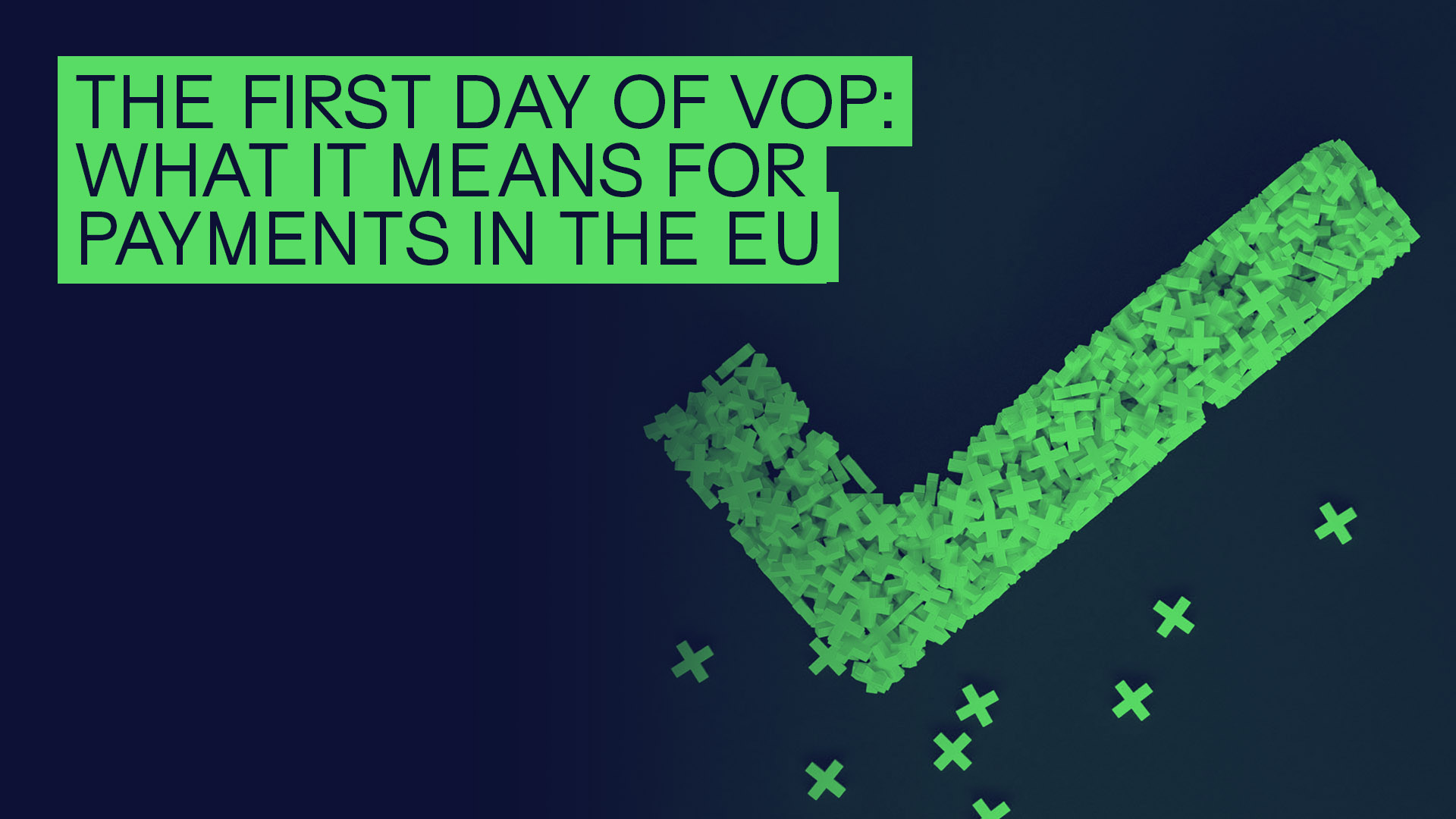The first day of VOP: What it means for payments in the EU

The day Verification of Payee becomes a reality has finally arrived. From today, October 9th, Payment Service Providers (PSPs) in several Eurozone countries must provide their customers acting as payers — with a Verification of Payee (VOP) solution before authorizing a credit transfer. Introduced in the Instant Payments Regulation (IPR), VOP applies to all types of credit transfers, initiated through any channel. In this respect, it represents a major change for PSPs, but also for Payers.
Why October 9th matters
It’s been a long time coming: the EU has been pushing for (free) instant payments for years and it finally becomes a reality. As most regulations and/or directives revolving around payments in the EU, IPR also introduced new security measures, one of them being the mandatory Verification of Payee.
PSPs have had several months to prepare for this new and key feature, in order to integrate it smoothly in the payments journey. While most appear ready — often through their chosen Routing and/or Verification Mechanism (RVM) — the official entry into force of IPR and the VOP obligation marks a significant turning point in the EU payments landscape, aiming at more security, transparency, and innovation.
PSUs (Payment Service Users) might have already noticed a change in their e-banking app notably, as they have to go through an additional step, the said Verification of Payee. This verification is mandatory – consumers cannot opt out – and is done in real-time.
Impacts for all stakeholders
- For PSPs → A new regulatory obligation means obviously important related operational changes. PSPs now need to provide Payers with a real-time beneficiary IBAN and name / identifier matching service, at no additional cost. To do so, they must connect to potentially 3,000 PSPs across the EU. Most of them have decided to rely on RVMs that can, as the name indicates, either route/dispatch the request, or directly verify the match between the different pieces of information entered by the Payer by leveraging a matching algorithm.
- For Consumers → VOP means greater security and transparency: it will undoubtedly reduce fraud, errors or honest mistakes. In practice, it adds an extra step to the PSUs payment journey, which might cause (limited) friction in the first weeks or months. To prepare, banking associations as well as PSPs have proactively communicated this change to the public, warning them about this upcoming feature.
- For Companies → Like individual consumers, companies will benefit from fewer errors and reduced fraud in credit transfers. To this day, several open questions remain open, notably regarding the smooth integration of VOP in corporate payment flows and the fact that different channels and formats are used by companies. These should be clarified in the following weeks and months. At LUXHUB, we’ve explored alternatives with the ambition to support PSPs as well as corporates and make sure that it causes minimum friction for all parties involved. Read more.
Challenges on D-Day
The impact of VOP – the European Payments Council (EPC) VOP Scheme has been live for several days now, since October 5th, 2025 – is still to be determined. Yet, a large majority of PSPs are ready, as most of them adhered to the Scheme during Waves 1 and 2 – from to March to end of June – which gave them time to take part in the EDS Pilot Phases. This enabled them to be on time and be ready for the go-live of the EPC VOP Scheme in early October. In a recent press release, the EPC highlighted that its VOP “register of participants includes 2,673 participant PSPs and 55 Routing and/or Verification Mechanisms (RVMs) ready for VOP operations. Participation is expected to exceed 3,000 PSPs by July 2027, when the IPR obligations will be extended to non-Euro Area PSPs”.
Also, VOP requires robust infrastructures capable of handling important volumes, authentication flows, etc. PSPs that have chosen to rely on compliance and payments experts such as LUXHUB, usually have had time to test the service with a limited number of PSUs (friends and family, for instance) but should be confident in the smooth implementation of VOP within their e-banking app or website.
Providing an efficient and flawless service will be key for PSPs. Those that did not planned enough or could not significantly test their service might face long(er) time to display matching results, and, for instance, false matches/no matches, etc. Such issues and pain points could lead to decreasing trust. And in a competitive market such as the payments industry, PSPs should not overlook such potential bottlenecks.
Beyond Compliance: building a new (and more secure) payments landscape in the EU
VOP is not just a legal requirement: it’s an additional stepping stone toward a more robust, secure and also innovative EU payments market. More regulations and directives are expected in the months to come (PSR, PSD3 and even FiDA, just to name a few) and will keep on transforming the overall EU payments landscape.
VOP could also open potential new revenue streams for PSPs that enhance customer experience and optimize payment journeys. This could also lead to new partnerships across the financial ecosystem.
At LUXHUB, we specialize in supporting PSPs with their regulatory challenges, and aim at helping them turn regulatory pressure into business advantage. In this respect, LUXHUB invites PSPs and financial institutions to explore how its VOP solution can accelerate their journey — from compliance to innovation.
Today clearly marks the start of a new payments era in Europe.